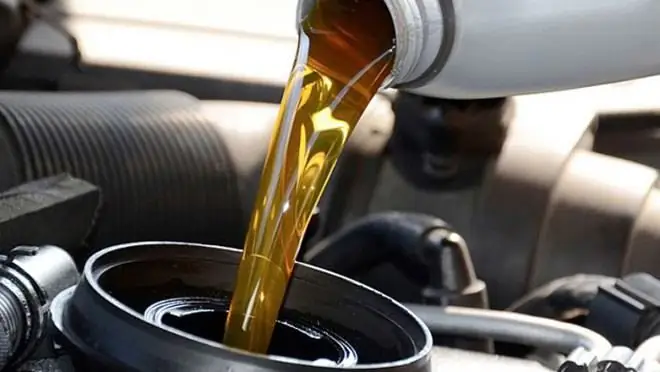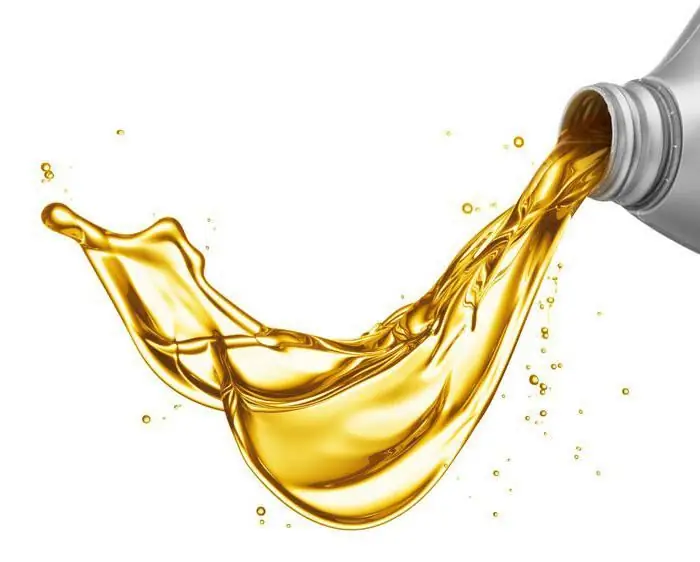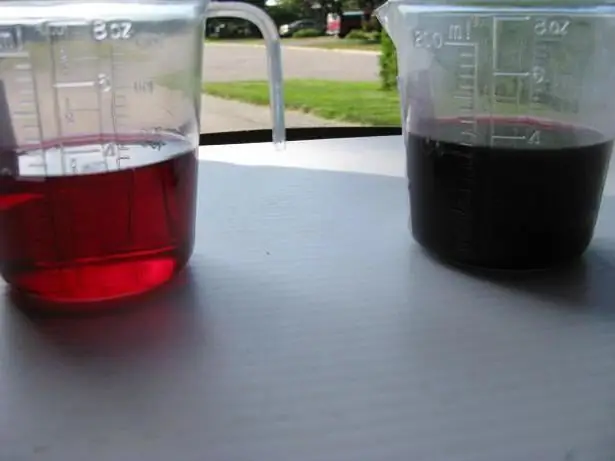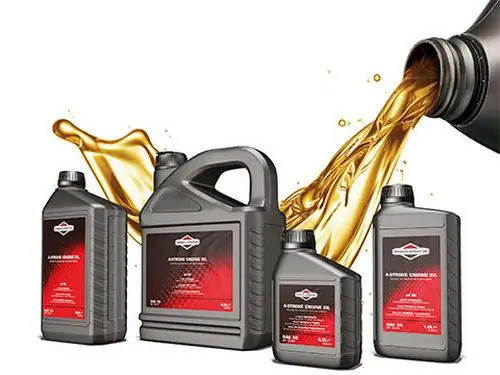2026 Author: Erin Ralphs | [email protected]. Last modified: 2025-01-22 21:14:09
All engine oils produced for the global automotive market and the fuel and lubricants market have standards and regulations. One of the most important standards is the API specification system. This classification of automotive oils used to protect internal combustion engines was developed by the American Petroleum Institute (API), from which the world-famous abbreviation was obtained. The main parameters in the standardization and classification of engine oil into categories are the scope of the lubricant, as well as the performance of the product.

American Petroleum Institute
This association is the only one in the United States that has the status of a national non-governmental organization. The institute's field of activity includes research on all processes governing the functional working aspects in the oil and gas industry.
The American Petroleum Institute, which develops API oil specifications, was formed in 1919. His initial tasks were to interact withgovernment agencies in solving problems at the national level, assistance in promoting the sale of the country's own oil products in domestic and foreign trade, increasing interest and demand for the national oil industry in all sales categories.
Also, one of the directions for the development of the Institute of Oil was the development of standards and regulations. The first API standards and specifications were shown to a wide audience in 1924. Today, in modern production facilities, the organization maintains over 500 regulations and standards that operate in all areas of the oil and gas industry. The purpose of the specifications is to promote the safe use of equipment, materials and good engineering practices.

Lubricants
Lubricants were used long before the appearance and development of modern scientific and technical base. Previously, fats of vegetable or animal origin were used as lubricating elements. In the middle of the last century, natural oils replaced petroleum products. Since then, the development of engine oils has increased dramatically. Viscosity modifiers have appeared in the molecular structure of lubricants. Thanks to them, motor oils began to be divided into classes and types that function under certain temperature conditions, universal types of oils appeared, which subsequently received API approvals and specifications.
Over time, the structural composition and technical parameters have undergonemany changes, but the main task of motor lubricating fluids has remained unchanged. Engine oil should protect parts and assemblies from friction and premature wear by enveloping the latter with an oil film, penetrating into all gaps and technical gaps.

Classification of oils
The API engine oil classification was developed by the American Petroleum Institute in 1969. This classification divided lubricants into the following groups:
- lubricants used in gasoline engines are marked with the letter "S" (Service);
- lubricants used in diesel engines are marked with the letter "C" (Commercial);
- gear lubricants marked "GL";
- oils used in two-stroke engines, marking "T".
There is also a category of lubricating fluids labeled "EC" (Energy Conserving). This group is characterized as an energy-saving category of oils. Numerous tests and studies have provided guaranteed confirmation of this category.

Marking Features
Motor oils differ in their field of operation and workmanship. This has been taken into account in the API specifications. Based on this, in different groups there are lubricants that were distributed according to quality parameters and performance properties. Marked on packagingsuch products is as follows: API SM, API CF, etc.
The first letter in the marking respectively indicates the type of engine, the second - determines the indicator of the level of performance. It should be noted the regular ratio of the second letter in the marking: the further the letter is from the beginning of the Latin alphabet, the higher the oil level according to the API specification.
There is also a category of oils with approvals for use in both gasoline engines and diesel units. Such a product is appropriately marked, for example, as API SN/CH. This example indicates that the lubricant is suitable for both a gasoline engine and a diesel one, but the manufacturer prefers power units with gasoline fuel.

Initial S-grade specifications
SA. The very first type of oil fluid standard that was used in engines until the 30s of the last century. Does not contain additives. Application in more modern engines can only be justified on the recommendations of the manufacturer of the power unit. Otherwise, oil with this specification may harm the device.
SB. Oil was marked after the 30s for engines with a low load. Not recommended for modern units.
SC. Lubricant for engines manufactured between 1964 and 1967. It was characterized by weak anti-corrosion properties.
SD. This API engine oil specification was produced until 1971 and differed from the previous one by improvedparameters.
SE. Oil of this category was operated until the 80s, had better characteristics than its predecessors.
SF. Operation period 1981-1989 It had improved wear resistance, carbon deposits and acid resistance.
SG. The specification was applied from 1989 to 1995. Additives appeared in the composition of the oil.
SH. May replace previous specifications. Has a set of additives in the composition, well prevents carbon deposits, high anti-corrosion properties.
Modern Specifications
SJ. Operated to this day. Standardization was carried out in 1995. It has good lubricating and protective properties.
SL. It is intended for use in power units that were manufactured in compliance with the 2000 environmental standards. Helps reduce fuel consumption.
SM. The API SM specification was designed during development to increase energy efficiency and environmental compliance. The oil has high protective parameters. Maximum resistance to oxidative processes, prevents the formation of slag and deposits on the engine walls. Suitable for turbine engines.
SN. The API SN specification is the most modern oil classification that meets all the latest requirements for environmental friendliness, safety and reliability of the internal combustion engine. Reduced phosphorus content as a percentage. Affects fuel consumption in favor of economy.

C-grade specification
Specifications CA, CB, CC, CD, CE are technically outdated and not recommended for use in modern engines.
The CF API specifications are the most popular:
- API CF 4 - for four-stroke diesel engines with high loads;
- API CF 2 - for two-stroke engines.
The latest specification in the diesel category is marked as CJ 4. Containing compliance with all global standards and requirements.
Recommended:
API SL CF: decryption. Classification of motor oils. Recommended engine oil

Today, almost any driver who has a we alth of experience behind him knows perfectly well what the decoding of the API SL CF testifies to. This applies directly to engine oils, and among them there are different options - for diesel and gasoline engines, including universal oils. Beginners can simply get confused in this combination of letters and sometimes numbers
Automotive oils 5W30: rating, characteristics, classification, declared qualities, advantages and disadvantages, reviews of specialists and car owners

Every car owner knows how important it is to choose the right engine oil. Not only the stable operation of the iron “heart” of the car depends on this, but also the resource of its operation. High-quality oil protects mechanisms from various adverse effects. One of the most popular types of lubricants in our country is oil with a viscosity index of 5W30. It can be called universal. The 5W30 oil rating will be discussed in the article
Motor oil: marking, description, classification. What does the marking of motor oils mean?

The article is devoted to the classification and labeling of motor oils. SAE, API, ACEA and ILSAC systems reviewed
Classification of gear oil according to SAE and API

Transmission lubricating fluids are used in gearboxes, transfer cases, axles and steering mechanisms. There are cars where the same engine oil is poured into the gearboxes. But in some mechanisms that are subjected to particularly heavy and complex loads, and where it is difficult for oil drops and mist to get from it, a supply of transmission oil under pressure is required. Separate different groups and types of motor oils. The classification of gear oils is also different
Motor oils: oil properties, types, classification and characteristics

Beginner drivers face many questions when operating their first car. The main one is the choice of engine oil. It would seem that with today's product range on store shelves, there is nothing easier than choosing what the engine manufacturer recommends. But the number of questions about oils does not decrease

